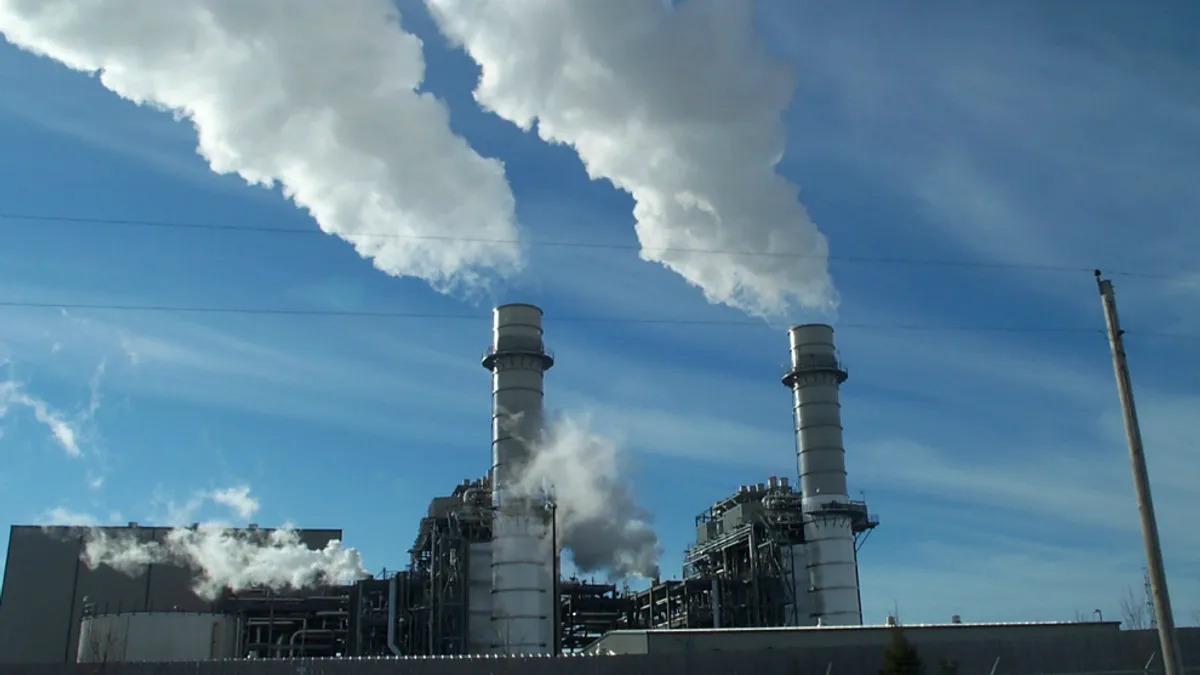Dive Brief:
- For the second time ever — and the second time this year — the U.S. Energy Information Administration (EIA) reports that gas generation exceeded coal on a monthly basis.
- Natural gas' share of U.S. generation in July 2015 was 35%, barely edging out coal's 34.9% to take the top spot.
- Excluding distributed resources, the total electricity demand grew year-over-year in the U.S. to 398 billion kWh in July 2015, compared with 384 billion kWh during the same period the year before.
Dive Insight:
The gradual shift from coal to gas in the U.S. fuel mix is evident in the latest EIA data.
"Compared to the previous July, coal-fired generation fell in every region of the country, while natural gas-fired generation rose in every region," the agency said. It is only the second time gas has exceeded coal generation; the first was earlier this year in April.
Coal-fired generation fell from 150 billion kWh to 139 billion kWh, while EIA data shows gas-fired generation rose from 114 billion kWh to 140 billion kWh. EIA said the Mid-Atlantic region had the largest decline in coal-fired generation, followed by Texas, while the Southeast and Central regions had the largest increases in natural gas-fired generation.
The shift in generation is being partly fueled by low gas prices, but could also be fueled by a shifting regulatory atmosphere that's more favorable to natural gas than coal. The monthly average price at the benchmark Henry Hub declined from $4.14/MMBtu last July 2014 to $2.91/MMBtu this July. EIA said the average price of wholesale natural gas in New York City during July was barely above $2/MMBtu, below the average wholesale price of Central Appalachian coal ($2.31/MMBtu), "even before accounting for differences in fuel conversion efficiencies between coal- and natural gas-fired generators."
Before this year, EIA said the last time electricity generation from natural gas came close to surpassing coal-fired generation was April 2012, when monthly average spot prices for natural gas were near $2/MMBtu.
The Obama administration's Clean Power Plan (CPP), which aims to reduce greenhouse gas emissions by 32% by 2030 below 2005 levels, is predicted to force some 90 GW of coal-fired production offline, according to the EIA.
Many utilities are turning to natural gas as a successor to coal as a reliable generation fuel and an avenue to comply with the CPP. The U.S. will need to add some 150 MW of natural gas generation by 2030 to comply with the CPP, according to the North American Electric Reliability Corporation (NERC).














